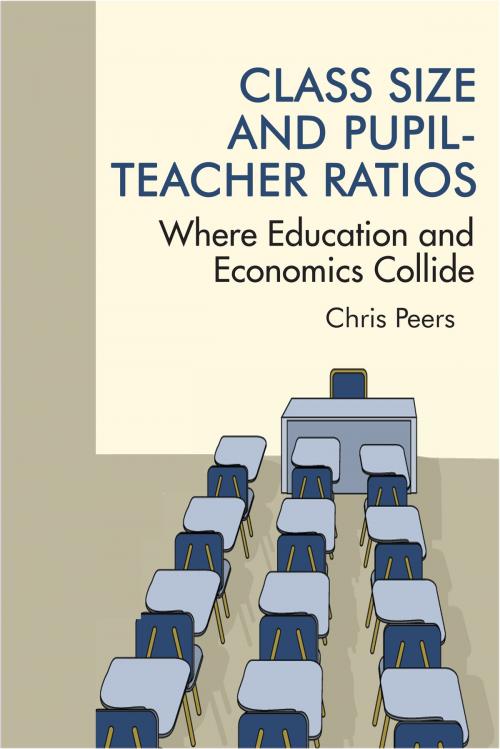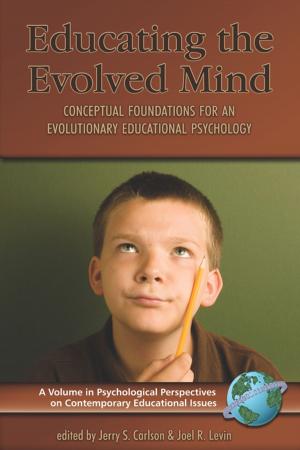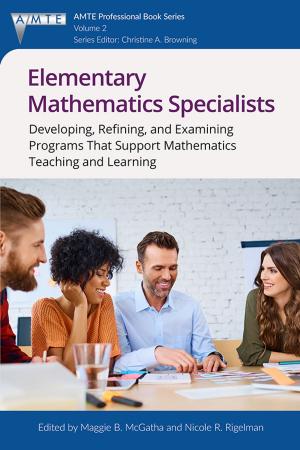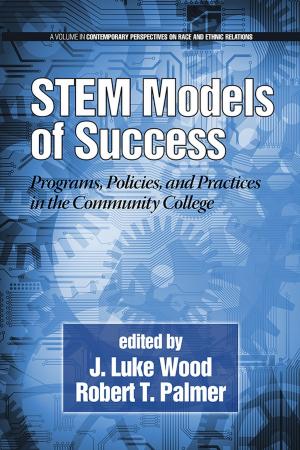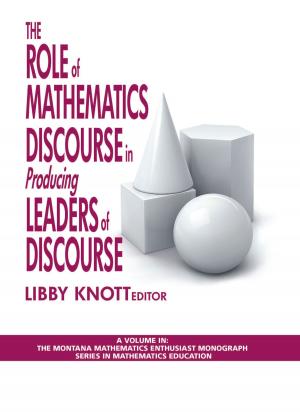Class Size and Pupil?Teacher Ratios
Where Education and Economics Collide
Nonfiction, Reference & Language, Education & Teaching, Parent Participation, Educational Theory, Educational Reform, Administration| Author: | Chris Peers | ISBN: | 9781681235622 |
| Publisher: | Information Age Publishing | Publication: | June 1, 2016 |
| Imprint: | Information Age Publishing | Language: | English |
| Author: | Chris Peers |
| ISBN: | 9781681235622 |
| Publisher: | Information Age Publishing |
| Publication: | June 1, 2016 |
| Imprint: | Information Age Publishing |
| Language: | English |
This book provides a “primer” with respect to the debate about class size between economists and educators. In particular it offers an overview of how economists look at school funding problems, and makes a comparison between the work of the Chicago School and others like Eric Hanushek, which has focused intensely on the economic relationship between public spending on educational resources and the cost of equipping and expanding school infrastructure, and student outcomes. The book therefore focuses on class size as a primary example of the way in which economists have come to treat teaching and learning as a site for the development of human capital. The book also takes a historical look at the debate about class size from the perspective of theories about public choice, which have emerged from the Chicago School through the writings of Milton Friedman. This raises the issue of how the notion of the “public” is understood, and whether educators and economists are coming from different perspectives about what schools should do for the community. Many educationists think about the problem of class size from the perspective of a classroom teacher, who must “eyeball” her students and regard them as flesh?and?blood individuals, whereas economists deal in statistical numbers and should therefore be understood as regarding class size as symptomatic of population issues. The book surveys the two sides of the long?standing debate about class size and its supposed relationship to student achievement. The aim is to disclose a theoretical principle that is adopted by both sides in the debate, even if neither side is conscious of it. This principle relates to the issue of individuals and populations as a binary opposition that supplies either side with a valid viewpoint. The book explores this principle, arguing that each of these opposing perspectives depends on the other for its own logical outcome. The book analyses the procedure of opposing individuals to populations and demonstrates that the question of class size could be more effectively approached by dealing with the principle that is at its core.
This book provides a “primer” with respect to the debate about class size between economists and educators. In particular it offers an overview of how economists look at school funding problems, and makes a comparison between the work of the Chicago School and others like Eric Hanushek, which has focused intensely on the economic relationship between public spending on educational resources and the cost of equipping and expanding school infrastructure, and student outcomes. The book therefore focuses on class size as a primary example of the way in which economists have come to treat teaching and learning as a site for the development of human capital. The book also takes a historical look at the debate about class size from the perspective of theories about public choice, which have emerged from the Chicago School through the writings of Milton Friedman. This raises the issue of how the notion of the “public” is understood, and whether educators and economists are coming from different perspectives about what schools should do for the community. Many educationists think about the problem of class size from the perspective of a classroom teacher, who must “eyeball” her students and regard them as flesh?and?blood individuals, whereas economists deal in statistical numbers and should therefore be understood as regarding class size as symptomatic of population issues. The book surveys the two sides of the long?standing debate about class size and its supposed relationship to student achievement. The aim is to disclose a theoretical principle that is adopted by both sides in the debate, even if neither side is conscious of it. This principle relates to the issue of individuals and populations as a binary opposition that supplies either side with a valid viewpoint. The book explores this principle, arguing that each of these opposing perspectives depends on the other for its own logical outcome. The book analyses the procedure of opposing individuals to populations and demonstrates that the question of class size could be more effectively approached by dealing with the principle that is at its core.
